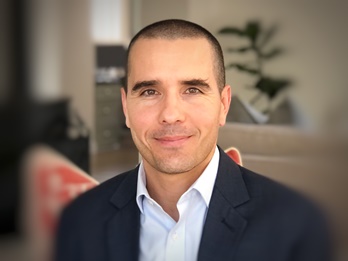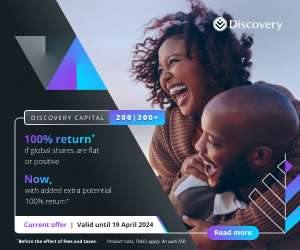Most would agree with the statement made above. In addition, what should be agreed with is that when new information comes to the fore, it needs to be interrogated and if found to be sound it should be incorporated, in this case, in the investment management process. The concept is called Bayesian Thinking.
Carl Richards summed it up well: “We are not defenders of outdated maps. We are guides of the changing landscapes.” Richards made the statement in relation to the financial advice world; it can also be applied here.
With the right advice, you can build something truly special and unique to your personality.
If you are a South African with an investment through a retirement product, a retirement annuity, pension, provident or preservation fund, you are bound by Regulation 28 limits. The limits include the percentage of assets with an offshore allocation. The limit of offshore exposure is currently 30% with an additional 10% that can be allocated to African assets.
Discretionary assets have no such limit, and you can invest the assets at your discretion.
The South African stock exchange makes up roughly 1% of global exchange investable assets. If you keep all your investments in South Africa, you are in essence missing out on a colossal amount of growth and diversification opportunities.
Once a decision has been made to invest offshore, the next question is, “How do I construct my offshore portfolio?”
The core-satellite framework is a well-known portfolio construction structure. The principle is to start by building the core, and largest part, of your portfolio, made up of an asset mix aligned with your long-term goal. Satellites are then added to provide access to alternative, and if possible, uncorrelated sources of return to complement the core.
The first task is to build the core. The standard offshore portfolio makeup over the past couple of decades has been the 60/40 portfolio, referencing a 60% allocation to stocks and 40% to bonds. This simple allocation has proven remarkably effective. According to Michael Batnick, director of research at Ritholtz Wealth Management, a 60/40 portfolio has posted an average return of 10.7% over the past 50 years (using the S&P 500 Total Return Index and the Bloomberg Barclays US Aggregate Bond Index).
The critical question to be answered is, will this combination deliver similar returns for the next 50 years? Over long periods of time, stocks have shown to deliver superior performance to most listed asset classes and there is reason to believe they will still do so in the future.
Over long periods of time, stocks have shown to deliver superior performance to most listed asset classes and there is reason to believe they will still do so in the future.
Are stocks currently “expensive”? In relation to historical metrics, you can make the argument, yes. Are these metrics still relevant given the makeup of world indices versus the way they looked 50 years ago? Likely not. Either way, listen to Mister Buffet who said that he will instruct that most of his fortune upon his passing be invested in a product tracking the S&P 500 with little human intervention and low cost. For this allocation, go low-cost passive (index tracking). Mental energy on constructing the core should rather be spent on the equity index being chosen to track rather than trying to find an active manager that will outperform an index.
So, will the US still be the largest economy over the next few decades? Will China take their crown? Will Europe or Japan wake up again? And will their respective markets follow? No-one knows, even though many has an opinion. Either way, buy a low-cost index that references the major stock markets and economies of the world. An example, the Vanguard Total World Index with a fee of only 0.08% per annum. Buy and hold for as long as possible.
The overall asset allocation and in particular the allocation to bonds is a bit trickier. The average US 10-year bond yield in 1980 was 11.43%, versus the average yield in 2020 of 0.89%. Remember if yields decrease, bond prices increase, so this was a phenomenal bond bull market. Could rates go lower still? Possibly. Are rates going to go consistently lower for the next few decades? Probably not.
The allocation to bonds and bond alternatives versus equity depend on two aspects that are intertwined. Firstly, your investment period and secondly, your ability to stomach volatility. The longer your time horizon, the lower your allocation to bonds should be and the lower your volatility absorption threshold, the higher your allocation to bonds should be. A quality financial advisor should be able to assist here with ease.
The longer your time horizon, the lower your allocation to bonds should be and the lower your volatility absorption threshold, the higher your allocation to bonds should be.
There are alternatives to traditional sovereign bonds in high-yield corporate bonds. Although the probability of default is higher than their sovereign counterparts, so too is the expected return. If, however, offshore bonds are not expected to provide an inflation-beating return in the medium to perhaps even the long term, are there other tools a private investor can access that provide some sort of downside protection with a higher probability than bonds to deliver inflation-beating returns?

I believe the answer is yes.
A unit trust portfolio has the obligation to provide liquidity to unit holders whenever required. If I want to withdraw my funds, I put in a redemption request and have access to my funds a few days later (in most cases). Hence, management of these funds needs to be done in such a way that liquidity is readily available. An individual on the other hand has, with the right financial coach, the ability to take on illiquid positions.
Structured notes that are designed to provide a high probability of coupon payments (quarterly, semi-annual or annual) and provide some downside protection can be a great alternative to traditional bonds. Individuals have the option to take advantage of the illiquidity premium that most retail portfolio managers cannot.
Constructing the core of any strategy is literally the centre of the investment process. The next steps are the satellites that can provide exposure to some totally unique assets. Think infrastructure, the green economy, innovation and disruption and health and wellness to name a few.
With the right advice, you can build something truly special and unique to your personality.












